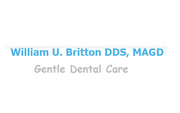
An astonishing 50% of Americans have gum disease to some extent. If left untreated, this issue can lead to complex oral health issues, like discolored gums, tooth pain and loss, and even structural changes to the mouth. To prevent gum disease before it starts, here are four common signs to be on the lookout for.
4 Indicators of Gum Disease
1. Swollen or Bleeding Gums
One of the first signs people notice is unusually sensitive, swollen, or red gums. Gum disease strikes when gum tissues become chronically inflamed, and increased tenderness, swelling, and deeper red color are all telltale symptoms of inflammation. Similarly, due to the heightened sensitivity, it's not uncommon gums to bleed after flossing or a particularly intense brushing.
2. Receding Gumlines
When you inspect your smile in the mirror, note your gumline. Gums that are visibly receding are typically the result of gum disease. The tissue is pulling away from the teeth, weakening the health of your teeth. Alternatively, you might notice that your teeth appear longer than they once did. This is because they are exposed due to gum recession.
3. Pockets between Teeth & Gums
As gum tissue pulls away from the teeth, it often produces tiny pockets between the teeth and gums. These pockets are visible by looking closely along the gumline. In fact, your dentist monitors and keeps track of these pockets at every exam.
4. Persistent Bad Breath
Gum disease starts with the buildup of plaque on the teeth and gums. Plaque causes bacteria to develop, which irritates and erodes the gumline. Bacteria can lead to bad breath that just won't go away. If brushing and rinsing don’t get rid of persistent bad breath, the problem might be with your gums.
Regular brushing and flossing will only go so far once signs of gum disease are present. To prevent it from worsening, visit a dentist regularly. Adult and pediatric dentist William U. Britton DDS, MAGD, of Ross County, OH, is invested in the dental hygiene and wellness of all of his patients. Schedule an exam by calling (740) 772-2225, visit his office's website, or contact them on Facebook
About the Business
Have a question? Ask the experts!
Send your question

